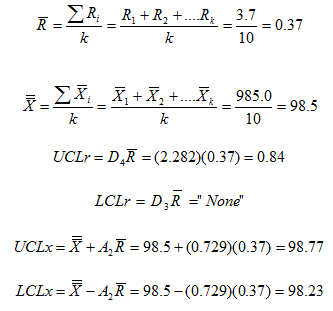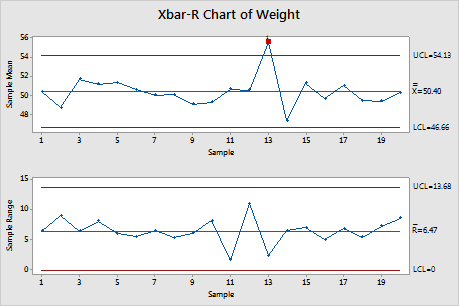


X-double bar is simply an overall mean of all our sample means. We are missing 3 more lines – UCL, LCL, and grand mean (X-double bar). LIMIT 10 - limit to last number of samples It could be useful to limit the result set to the last number of samples. Let’s average them out to get Xbar values. Raw measurement values are now in groups. Don’t forget to order it by date before applying a limit. We could further reduce the result by limiting it to the last n number of measurements. (row_number() OVER (ORDER BY measurementDate DESC) - 1) / 5 AS subgroup In an X-bar chart, our subgroup should be between 2 and 10. Next, we split the result into sub-groups using the window function. In this example, we will filter our measurements by part, characteristic, and measurement date. The first thing we need to do is to reduce the number of data points. CREATE TABLE spc_constantsĬONSTRAINT subgroup_pk PRIMARY KEY (subgroup) We will also need a table with SPC constants. Initial SQL setupĬreate a sample measurement table and populate it with some measurements. A good example is if the first five data points out of a set of 20 are above the grand mean, and the final five are below. It usually happens when your data points do not look random and start forming a pattern. Sometimes, even if all points fall within X-bar control limits, there could still be a problem with your process. If the R chart is in control, we can be sure that control limits on the X-bar chart are accurate and we are doing an assessment on the process center. Before making any conclusions about the X-bar chart, we first need to look at the R chart and see if it is in control. If any point in your data set is outside of the calculated control limits (that is, the UCL and LCL), this may be an indication that the process variation is unstable or out of control. Subgroup size is 2 or more but less than 11.Your data, temperature, weight, length, position, and time, are measured on a continuous basis.Which control chart to use - flowchart What are the requirements for the X-Bar chart? X-bar chart along R chart will help you identify if variations from subgroup to subgroup in your process come from a common or special cause. Process is stable when both means and variances are constant over time. Use X-bar R charts to assess the stability of a continuous process. If the R chart is out of control, then the control limits of the Xbar chart might be wrong. It is usually plotted together with the Xbar chart because it essential to correctly interpret the Xbar chart. R chart is used to monitor the variation of a process performed in subgroups on a continuous data flow. When working with X-Bar charts, we have to talk about R chart. Data points are ordered by time or by production sequence. Upper and lower control limits are calculated from the data set, as such, almost all of the data points on the chart will fall within these limits as long as the process remains in control.

X- double bar or x̄̄ - grand mean (mean of sample means).The X-bar (x̄ or Xbar) chart is used to monitor the mean of a process where measurements are performed in subgroups on a continuous data flow. Understanding the fundamentals will allow you to build efficient, custom queries that can scale across large volumes of your measurement data.
XBAR AND R CHART EXAMPLE CODE
The SQL queries below were built and tested on the PostgreSQL database but will work on any rational database with very small tweaks.īefore diving into the code though, it is crucial to understand what X-Bar and R charts are, when to use them and why. Queries are designed to be “variable-friendly”, meaning you will be able to add variables from your BI tool and dynamically control things like date ranges, sample size, or last number of measurements.
XBAR AND R CHART EXAMPLE HOW TO
This is the first guide in a series that will show you how to create various control charts using SQL so you can easily visualize them in business intelligence (BI) tools like KensoBI/Grafana, QlikView, or PowerBI. In this tutorial, you will learn how to create an X-bar R charts using SQL commands.


 0 kommentar(er)
0 kommentar(er)
